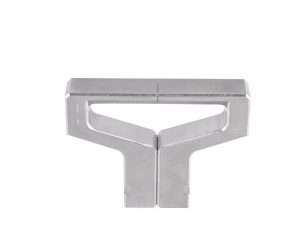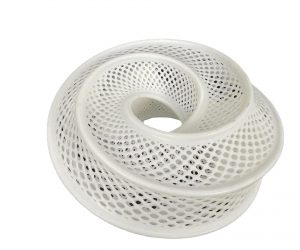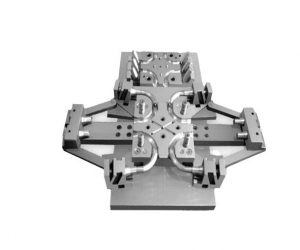The efficacy of additive manufacturing hinges critically on the fidelity and sophistication of the digital design. This treatise transcends introductory overviews, delving into the nuanced art and science of 3D modeling specifically tailored for optimal 3D printing outcomes. We will explore not merely the mechanics of model creation, but the strategic considerations necessary to unlock the full potential of your 3D printing workflow, addressing both the aesthetic and the profoundly technical aspects of the process.
The Algorithmic Foundation of Printable Geometry:
A. Beyond Mere Representation: The Printability Imperative: A successful 3D-printed object is not simply a digital representation; it's a meticulously engineered structure optimized for the specific constraints of the additive manufacturing process. This necessitates a profound understanding of layer adhesion, support structures, overhang limitations, and the inherent material properties of the chosen filament or resin. The model must not only look good but print flawlessly.
B. The Multifaceted Nature of Design Excellence: The ideal 3D model for printing transcends simplistic aesthetics. It demands a synergistic interplay of factors: geometric complexity balanced against print time and material usage; robust structural integrity capable of withstanding post-processing and intended use; meticulous surface topology to minimize artifacts and maximize surface finish; and precise adherence to chosen file formats (STL, OBJ, AMF) and their inherent limitations. Failure to consider these interconnected aspects will invariably lead to suboptimal results.
Navigating the Digital Foundry: Software and Techniques:
A. Software Selection: A Strategic Decision: The selection of 3D modeling software is not arbitrary. It represents a commitment to a specific design philosophy and workflow. While popular options like Fusion 360, SolidWorks, Blender, and ZBrush offer powerful capabilities, the optimal choice depends on the complexity of the project, the designer's proficiency, and the desired level of control over the final geometry. Consider the strengths and weaknesses of parametric modeling (CAD) versus mesh-based modeling, and the implications for design iteration and modification.
B. Beyond the Basics: Advanced Modeling Techniques: Mastery of fundamental modeling principles (vertices, edges, faces, NURBS surfaces) is merely the threshold. True proficiency demands a deep understanding of advanced techniques: Boolean operations for complex geometries; subdivision surface modeling for organic forms; parametric modeling for design iteration and automation; and the strategic application of texture mapping and UV unwrapping for realistic rendering and surface detailing. The effective utilization of these techniques is crucial for generating designs that are both aesthetically pleasing and structurally sound.
C. Pre-Print Optimization: Bridging the Digital-Physical Divide: The journey from digital design to physical object necessitates a crucial pre-print optimization phase. This involves rigorous analysis of the model for potential printing errors, the generation and implementation of support structures (where necessary), the careful consideration of orientation to minimize warping and layer adhesion issues, and the meticulous preparation of the final file for the specific requirements of the chosen 3D printer. This stage is arguably as critical as the modeling process itself.
The Iterative Path to Additive Manufacturing Mastery:
The creation of exceptional 3D models for printing is not a singular event but an iterative process of design, analysis, refinement, and testing. Continuous learning, experimentation, and a deep understanding of both the digital and physical aspects of additive manufacturing are essential for achieving consistent success. This treatise serves as a foundation upon which to build a comprehensive understanding of this complex and ever-evolving field.
This document outlines sophisticated techniques and considerations for achieving optimal results in 3D printing, moving beyond rudimentary practices to encompass advanced methodologies and problem-solving strategies.
Topology Optimization and Mesh Integrity for Enhanced Printability
A. Beyond Simplification: Algorithmic Mesh Reduction and Topology Optimization: Naive polygon reduction is insufficient for complex geometries. Employ advanced algorithms, such as quadric edge collapse decimation or iterative mesh simplification, to maintain geometric fidelity while minimizing polygon count. Furthermore, integrate topology optimization techniques to iteratively remove material from the model, yielding structures that are both lightweight and structurally robust, crucial for minimizing material usage and print time. Consider the implications of different meshing algorithms on surface smoothness and feature preservation.
B. Manifold Geometry and its Imperative: Rigorous validation of manifold geometry is paramount. Non-manifold conditions, such as self-intersections, open edges, and inconsistent normals, will invariably lead to print failures. Utilize advanced mesh repair tools, including Boolean operations and surface reconstruction algorithms, to address these topological inconsistencies. Proactive mesh validation should be an integral part of the design process, not a post-hoc remedy.
C. Resolution and Detail Management: A Fractal Approach: The relationship between detail and resolution transcends simple scaling. Explore fractal geometry principles to generate intricate surface textures and details efficiently. This allows for the creation of visually complex models with significantly reduced file sizes compared to traditional high-polygon modeling. Adaptive mesh refinement techniques can further optimize resolution, focusing detail where visually critical.
Advanced Support Structure Generation and Orientation Strategies
A. Support Structure Optimization Beyond Simple Scaffolding: Move beyond basic support structures. Implement advanced algorithms that generate support structures tailored to specific overhang angles and surface complexities. Consider the use of soluble support materials to eliminate post-processing challenges and the integration of lattice structures for lightweight, yet strong support.
B. Orientation Optimization: A Multi-Objective Approach: Optimal print orientation is not a single-objective problem. It necessitates balancing factors such as support minimization, surface finish quality, print time, and material usage. Employ algorithms that consider these competing objectives simultaneously, potentially leveraging genetic algorithms or simulated annealing to explore the vast solution space.
C. Adaptive Slicing and Layer Height Control: Utilize adaptive slicing techniques that dynamically adjust layer height based on local geometry complexity. This allows for finer detail in critical areas while maintaining efficient print times in less demanding regions. This requires a deep understanding of your slicer's capabilities and the interplay between layer height, nozzle diameter, and material properties.
Harnessing the Power of Advanced Modeling Techniques
A. Procedural Modeling and Generative Design Integration: Combine parametric modeling with generative design techniques to create highly optimized and customizable designs. This involves defining design parameters, constraints, and objectives (e.g., minimizing weight, maximizing strength), allowing the algorithm to explore a vast design space and generate optimal solutions.
B. Digital Sculpting and its Application to Complex Geometries: Master advanced digital sculpting techniques to create complex organic forms that would be impossible to model using traditional polygonal methods. Understand the nuances of brush dynamics, subdivision surface modeling, and retopology workflows to achieve high-fidelity organic models suitable for 3D printing.
C. Mesh-Based Simulation and its Role in Design Validation: Integrate finite element analysis (FEA) or other mesh-based simulation techniques into your workflow to validate the structural integrity and performance of your designs before printing. This allows for iterative design refinement and ensures the final printed part meets its intended functional requirements.
This advanced approach necessitates a deep understanding of both 3D modeling software and the underlying principles of additive manufacturing. Continuous learning and experimentation are crucial for mastering these techniques and achieving exceptional results in 3D printing.
The seemingly straightforward process of 3D modeling and printing belies a complex interplay of factors demanding meticulous attention to detail and a proactive approach to troubleshooting. This treatise delves into the intricacies of this multifaceted field, exploring best practices, emerging technologies, and the critical considerations for achieving optimal results.
Quality Assurance: A Proactive Approach to Additive Manufacturing Excellence
A. Beyond Basic Metrics: A Multi-Dimensional Quality Control Paradigm. Rudimentary checks of file integrity and dimensional accuracy are insufficient. A robust quality control system necessitates the implementation of advanced techniques, including fractal analysis for surface roughness assessment, finite element analysis (FEA) for stress simulation and structural integrity verification, and rigorous statistical process control (SPC) to monitor print parameters and identify deviations from established baselines. The utilization of specialized software for automated defect detection and predictive maintenance algorithms for printer calibration is paramount.
B. Troubleshooting the Unpredictable: A Diagnostic Framework for Additive Manufacturing Anomalies. The simplistic categorization of issues like "layer shifting" or "warping" obscures the complex interplay of factors contributing to print failures. A comprehensive diagnostic framework must incorporate detailed analysis of material properties, environmental conditions (temperature, humidity, air currents), print bed adhesion characteristics, and printer hardware performance. Root cause analysis methodologies, such as the "5 Whys" technique, are crucial for identifying underlying systemic issues.
C. Post-Processing: Elevating Additive Manufacturing Outputs to a New Plane of Functionality. Post-processing transcends mere aesthetics. It's a critical phase encompassing advanced techniques such as selective laser sintering (SLS) post-processing for enhanced part strength, chemical etching for micro-feature refinement, and the application of specialized coatings for improved wear resistance, biocompatibility, or electrical conductivity. The selection of post-processing techniques must be aligned with the intended application and material properties.
The Algorithmic Landscape of Additive Manufacturing File Formats and Interoperability
A. Beyond STL and OBJ: Navigating the Complexities of Additive Manufacturing Data Exchange. While STL and OBJ remain prevalent, their limitations necessitate the exploration of more advanced formats like AMF, 3MF, and proprietary formats optimized for specific printer technologies. A deep understanding of the inherent strengths and weaknesses of each format, including their capacity to handle complex geometries, metadata, and material properties, is crucial for seamless data exchange and optimal print results.
B. Resolution and Tolerance: A Precision Dance Between Design Intent and Manufacturing Capabilities. The relationship between resolution, tolerance, and achievable surface finish is non-linear and highly dependent on the printer technology and material used. Precise control over these parameters requires a thorough understanding of the printer's capabilities, coupled with advanced modeling techniques that account for manufacturing constraints and tolerances.
C. Interoperability: Orchestrating the Symphony of Software and Hardware. The seamless integration of 3D modeling software, slicing engines, and printer firmware is paramount. Understanding the nuances of data transfer protocols, API integrations, and the potential for compatibility issues across different platforms is crucial for establishing efficient and reliable workflows. The adoption of standardized communication protocols and open-source software can mitigate interoperability challenges.
The Evolving Frontier of Additive Manufacturing: Forecasting the Future of 3D Modeling
A. Emerging Technologies: Redefining the Boundaries of Additive Manufacturing. The convergence of additive manufacturing with emerging technologies such as nanomaterials, bioprinting, and 4D printing promises to revolutionize the field. Understanding the implications of these advancements, including their potential impact on design methodologies, material selection, and manufacturing processes, is critical for staying at the forefront of the industry.
B. Automation and Artificial Intelligence: The Algorithmic Revolution in Additive Manufacturing. The integration of AI and machine learning into the 3D modeling and printing pipeline is poised to automate complex tasks, optimize print parameters, and enhance design efficiency. This includes AI-driven support structure generation, automated defect detection, and predictive modeling for optimizing print quality and reducing material waste.
C. Sustainability: A Paradigm Shift Towards Eco-Conscious Additive Manufacturing. The growing emphasis on sustainability necessitates the adoption of eco-friendly materials, processes, and design principles. This involves exploring bio-based materials, closed-loop recycling systems, and the optimization of designs to minimize material consumption and waste generation, aligning additive manufacturing with broader environmental responsibility goals.
The Algorithmic Genesis of 3D-Printed Artifacts: A Deep Dive into Model Fidelity and Production
A. Model Fidelity: The Nexus of Design Intent and Material Realization
The efficacy of additive manufacturing hinges critically on the precision and sophistication of the digital blueprint. A poorly constructed 3D model, regardless of printer capabilities, will inevitably yield suboptimal results. This guide has explored the fundamental principles governing successful 3D model creation, emphasizing not merely aesthetic appeal, but the rigorous application of topological optimization, mesh integrity analysis, and the nuanced understanding of slicer parameters. Mastering these techniques allows for the seamless translation of design intent into tangible, high-fidelity 3D-printed objects, exceeding expectations in both form and function. Failure to do so results in artifacts plagued by dimensional inaccuracies, structural weaknesses, and ultimately, a compromised realization of the designer's vision.
B. Navigating the Evolving Landscape of 3D Modeling
The field of 3D modeling for additive manufacturing is characterized by relentless innovation. Continuous advancements in software algorithms, material science, and printing technologies demand a commitment to lifelong learning. Stagnation is antithetical to progress in this dynamic domain. Proactive engagement with emerging techniques, such as AI-driven generative design and topology optimization algorithms, is not merely advantageous; it's essential for remaining competitive and unlocking the full potential of this transformative technology. The pursuit of mastery is a continuous iterative process, demanding both technical proficiency and a creative spirit capable of pushing the boundaries of what is currently achievable.
FAQs: Addressing Critical Aspects of 3D Model Development
1. Software Selection: A Critical First Step in the Additive Manufacturing Workflow
The selection of 3D modeling software is a pivotal decision, impacting every subsequent stage of the process. Consider not only file format compatibility (STL, OBJ, AMF, and emerging formats), but also the software's capacity for advanced mesh manipulation, automated support structure generation, and its integration with downstream processes, including slicing and printer control. Evaluate the software's performance with complex geometries, its ability to handle high polygon counts, and its overall user experience to ensure optimal workflow efficiency. The choice should reflect both the complexity of your designs and the specific requirements of your chosen additive manufacturing platform.
2. Model Optimization: Bridging the Gap Between Digital Design and Physical Reality
Optimizing a 3D model for printing necessitates a multifaceted approach. This involves not only simplifying geometry where appropriate to reduce print time and material usage, but also rigorously evaluating mesh quality, ensuring watertightness and resolving any topological inconsistencies. Careful consideration must be given to model orientation to minimize support structures and maximize print stability. Furthermore, understanding the resolution and tolerance limitations of your specific printer is crucial for achieving dimensional accuracy and surface finish consistent with design specifications.
3. Advanced Techniques: Unleashing the Power of Parametric and Generative Design
Parametric modeling offers unparalleled design flexibility, allowing for iterative adjustments and rapid prototyping through the manipulation of design parameters. Generative design, leveraging AI algorithms, takes this a step further, autonomously exploring a vast design space to identify optimal solutions based on predefined constraints and objectives. This approach is particularly valuable for complex geometries and applications requiring optimized material usage and structural integrity, pushing the boundaries of what's achievable through traditional modeling techniques.
4. Interoperability and Data Exchange: Ensuring Seamless Workflow Integration
Maintaining data integrity and compatibility across different software and hardware platforms is paramount. A thorough understanding of common 3D model file formats and their respective strengths and limitations is crucial. Attention to detail regarding resolution, scaling, and unit consistency is essential to avoid errors during data transfer and to ensure dimensional accuracy in the final printed artifact. A robust workflow that minimizes data conversion and maintains consistent units throughout the design-to-print pipeline is critical for achieving consistent results.
5. Future Trends: Anticipating the Evolution of 3D Modeling for Additive Manufacturing
The future of 3D modeling for additive manufacturing is characterized by increasing automation, integration of AI and machine learning, and a growing emphasis on sustainable practices. The convergence of generative design, advanced materials, and real-time rendering technologies promises to revolutionize the design process, enabling the creation of increasingly complex and customized products with enhanced efficiency and reduced environmental impact. Staying abreast of these developments is crucial for designers seeking to remain at the forefront of this rapidly evolving field.


